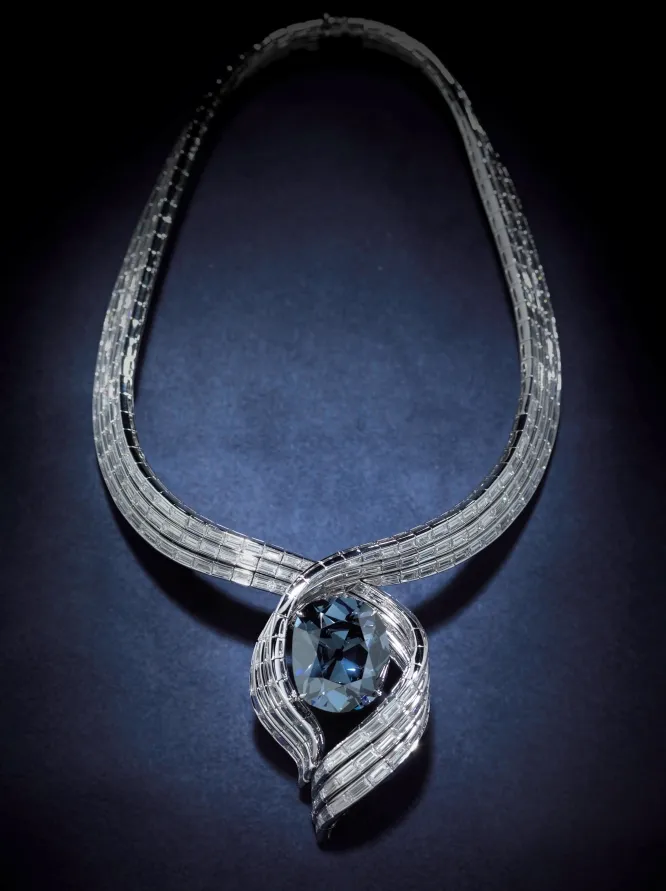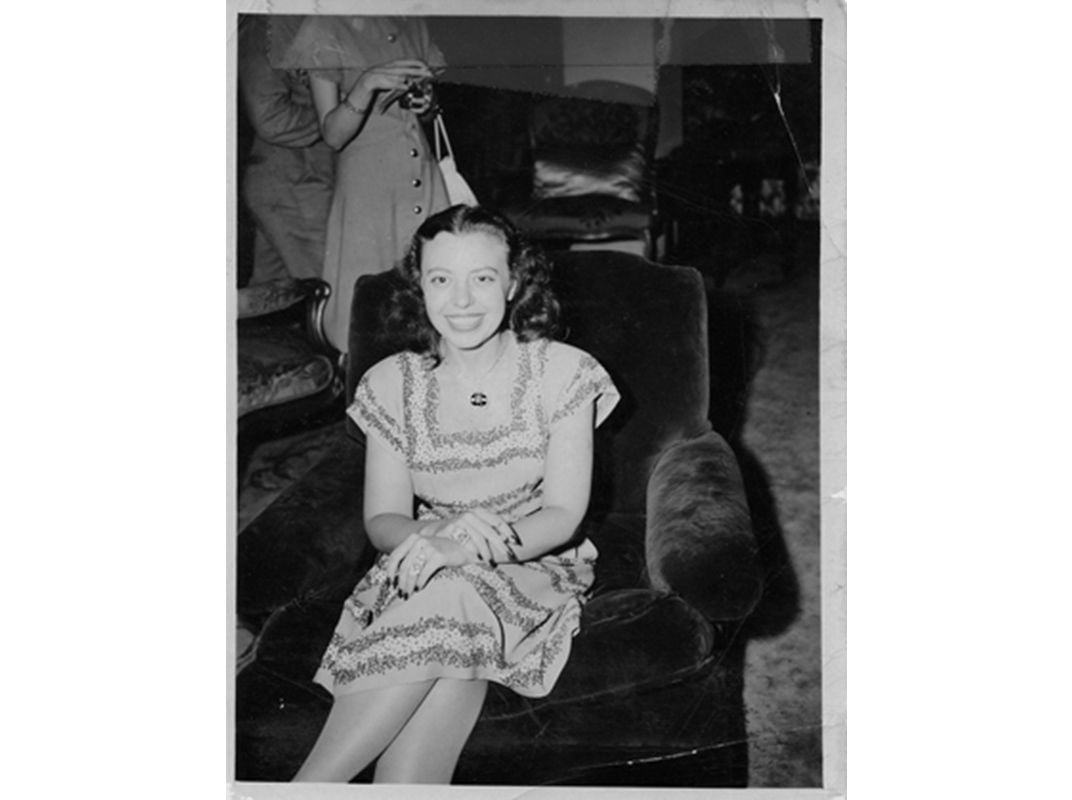Don’t You Wish You Could Wear the Hope Diamond?
How did such a huge rock come to be in the possession of such a party girl like Evalyn McLean
/https://tf-cmsv2-smithsonianmag-media.s3.amazonaws.com/filer/e1/3e/e13e1e51-63c4-4cbc-876b-671e9921006b/evalyn-walsh-mclean-wearing-the-hope-everett.jpg)
Many a museum-goer has fantasized about the Hope Diamond. How would it feel to have the cool weight of that walnut-sized blue pool of a diamond dangling at your neck?
But not many people have gotten to wear the famous jewel. So when Smithsonian reader John Langlois sent us this 1944 image of his mother, Ethel Galagan, with it around her neck, we were intrigued.
Galagan was an employee of the Government Printing Office during World War II. For some reason, and Langlois isn’t sure why, but Galagan was invited to a party at the Washington, D.C. home of the wealthy socialite Evalyn Walsh McLean, the owner of the Hope Diamond at the time.
McLean’s parties were legendary. According to Richard Kurin, in his book, Hope Diamond: The Legendary History of a Cursed Gem, McLean spared no expense and the guest list included “diplomats and dignitaries, royalty and national leaders, New Dealers and Republicans, scholars and entertainers.” Kurin is the Smithsonian’s Under Secretary for History, Art and Culture.
According to Langlois, his mother always maintained that General Omar Bradley, who at that time had achieved three stars out of his eventual five star ranking, and the influential Associate Justice of the Supreme Court Hugo Black were among the elite attendees that night.
Despite Galagan’s non-A-lister status, McLean asked her new friend to stand in the receiving line and greet guests as they entered.

Later that evening, McLean found Galagan and complained, “This thing is so damn heavy–you wear it for awhile!” And draped the necklace around Galagan’s neck. A friend had a camera, so her encounter with the Hope Diamond was captured on film for posterity.
And how did such a huge rock come to be in the possession of such a party girl like Evalyn McLean, you might ask? “Unconventional, young, rich, and spoiled” were the words Kurin used to describe the McLeans—Evalyn and her then-husband, Edward Beale McLean–at the time of their purchase of the gem in 1911.
The two had had more money than either knew what do with, and prior to their marriage Evalyn wrote that her fiance “had never been other than rich.” After joining their inherited mining and publishing fortunes in 1908 through marriage, they agreed to buy the stone from jeweler Pierre Cartier for a cool $180,000 in January of 1911. Aware of the supposed curse, as well as her inner desire for the gem, Evalyn wrote in her autobiography, “Then I put the chain around my neck and hooked my life to its destiny for good or evil.”

By the time of McLean’s death in 1947 at age 60, she had experienced a string of misfortunes that included her alcoholic husband running off with another woman, the bankruptcy of the family business and the early deaths of two of her children. All of these events added to the Hope Diamond’s reputation. McLean herself may not have bought into the mystique, however. “What tragedies have befallen me,” she wrote in 1936, “might have occurred had I never seen or touched the Hope Diamond. My observations have persuaded me that tragedies, for anyone who lives, are not escapable.”
After her death, the gem was sold to settle debts in McLean’s estate, to diamond merchant Harry Winston in 1949. In 1958, Winston donated it to the Smithsonian Institution. With a weight of 45.52 carats and an estimated value of more than $200 million, the infamous Hope Diamond remains one of the Smithsonian’s most popular and most iconic items.
/https://tf-cmsv2-smithsonianmag-media.s3.amazonaws.com/accounts/headshot/Jeff-Campagna-240.jpg)
/https://tf-cmsv2-smithsonianmag-media.s3.amazonaws.com/accounts/headshot/Jeff-Campagna-240.jpg)